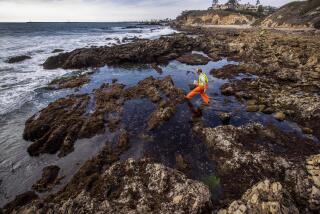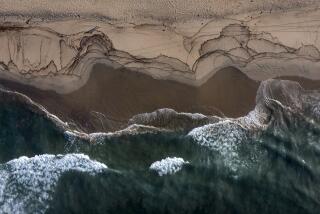Exxon, Witnesses Clash on Use of Dispersants
- Share via
VALDEZ, Alaska — Top Exxon executives contradicted government witnesses Monday, insisting they repeatedly urged the quick use of chemicals to disperse the nation’s largest oil spill but that federal authorities turned them down.
Their testimony before a five-member subcommittee of the House Interior Committee went against earlier statements by both the Coast Guard and the state’s top environmental official, who said the oil company did not seek widespread use of dispersant chemicals to break down the oil.
Exxon executives also disclosed for the first time that the cleanup has cost the oil giant $95 million to date.
“We came to Alaska to use dispersants,” Exxon Shipping Co. President Frank Iarossi told the panel. “I was pleading on my part to begin dispersal use . . . we were very aggressive.”
He said opposition from the state Department of Environmental Conservation and the Coast Guard blocked the chemicals’ use or limited them to tests or only small-scale use.
“We’re confident that had we obtained prompt permission to use the dispersant, the environmental damage (of the spill) would have been mitigated,” said Exxon USA President William D. Stevens.
Stevens said early use of dispersants or early burning would have broken up large amounts of spilled oil. Iarossi said the chemicals would have dispersed perhaps 40% of the Alaskan crude oil.
Dennis Kelso, commissioner of Alaska’s Department of Environmental Conservation, rebutted that testimony and described Exxon’s account Monday as a “fabrication.” Dispersants in parts of Prince William Sound had been preapproved by the state even before the oil spill, he said.
“Dispersants were not used extensively in the three days following the tanker accident because the winds and seas were too calm to provide the turbulence necessary to mix them with oil,” Kelso said in a statement.
The subcommittee held two days of hearings to investigate the oil spill, which occurred March 24 when an Exxon tanker struck a reef outside normal shipping channels in Prince William Sound.
Vice Adm. Clyde Robbins, the No. 2 Coast Guard official involved in the spill cleanup, also testified Monday that the oil industry did not seek permission to use large amounts of dispersants immediately after the spill.
Robbins and the Coast Guard’s Valdez commander both said Exxon and Alyeska, its pipeline service company, did not urge the use of dispersants.
More to Read
Sign up for Essential California
The most important California stories and recommendations in your inbox every morning.
You may occasionally receive promotional content from the Los Angeles Times.













